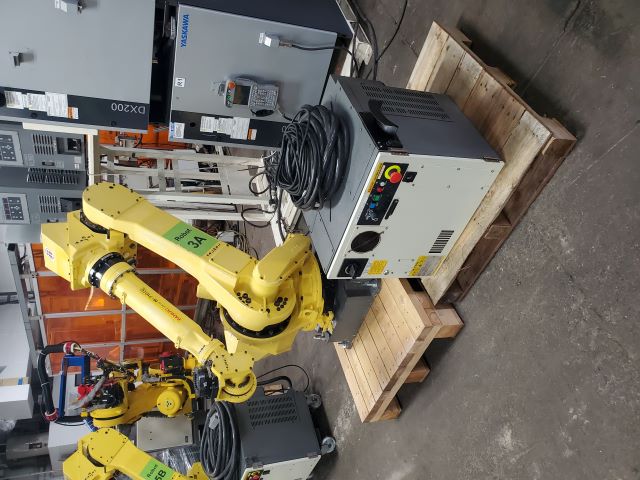What Costs can be Reduced with Industrial Robots?

One of the biggest benefits of robotic automation is reduced costs. With industrial robots most of their cost is paid upfront meaning significantly less money is spent per item manufactured than operations that rely mainly on manual labor. In fact, the cost of operating factory robots has been on the decline due to lower purchase prices, a robust used robot market, and easier maintenance requirements. In the long run companies will spend more with manual labor than automating with the FANUC M-710ic/70 and other articulated robots. Below is a look at the main areas of manufacturing in which industrial robots help cut costs.
Labor Costs
Automating with industrial robots means a portion, if not all, of manual labor is going to be replaced. The Yaskawa MH50 and other six axis robots are ideal for automating repetitive or dangerous jobs. They can operate faster and longer resulting in more products being processed in less time. The more productive a production is the less money will be spect for manufacturing. Fewer workers means less salaries and benefits to be paid by employers. Robot manipulators do not require expensive hourly rates or yearly salaries.It is not just salaries in which robotic manipulators help to reduce labor costs, but also costs associated with worker injuries and accidents. Automating dangerous jobs with robots reduces the likelihood of work related accidents by removing human involvement. Fewer accidents means less unplanned downtime, worker shortages, and compensation costs for employers.
Material Costs
Materials is another area of manufacturing in which implementing robotic automation lowers costs. Industrial robotic arms are extremely accurate with high repeatability which ensures they do not deviate from the application path. The Yaskawa Motoman MA1400 can produce the same weld over and over. The accuracy and precision of robots mitigates errors. Humans are error prone as they can easily lose concentration or become distracted. In addition, skill sets can vary greatly worker to worker causing inconsistencies and poor quality. Errors and poor quality are the biggest contributors to material waste and scrapped parts. Parts end up needing to be reworked which causes more materials to be used and costs to increase. Material costs are lowered with industrial robots as the chance of human error is eliminated. Robots are consistent in their operation, improving part quality. Material usage can be reduced, stabilized, and become predictable.Utility Costs
Even utility costs can be reduced by implementing robotic automation. Many modern robots are built with energy efficient features, helping to save on energy costs. Robots also do not require the same work environment as humans. The ABB IRB 1600 can operate without heating or cooling and in low light, further reducing utility costs for manufacturing facilities.Robots Done Right is the place to start when it comes to used robots. Contact us if you are interested in buying or selling a used robot.